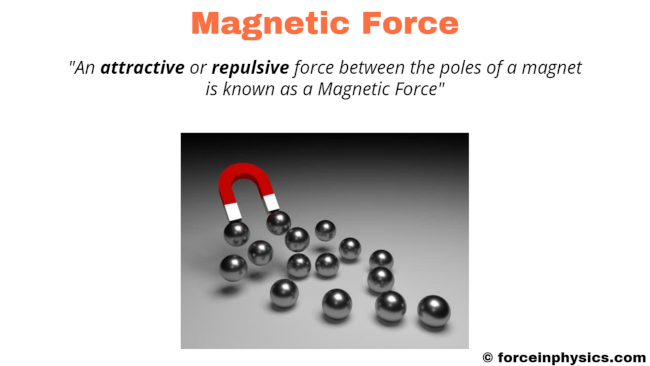
Magnetic force is the attractive or repulsive force exerted between magnets or magnetic materials. For example, when a magnet is brought close to a collection of iron balls, the magnetic force causes the balls to be attracted towards the magnet. This phenomenon demonstrates the ability of magnetic forces to influence and manipulate magnetic materials, a clear illustration of magnetism at work.
Examples
Magnet
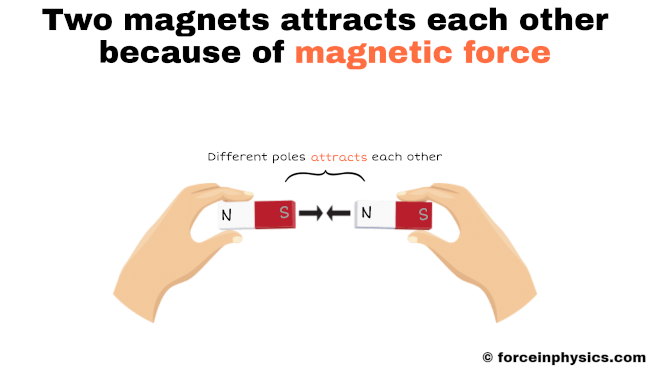
The attraction of two magnets is a result of magnetic force pulling them towards each other. Magnets have two poles, a north pole and a south pole. Unlike poles attract, so when the north pole of one magnet faces the south pole of another, the magnetic force causes them to be drawn together.
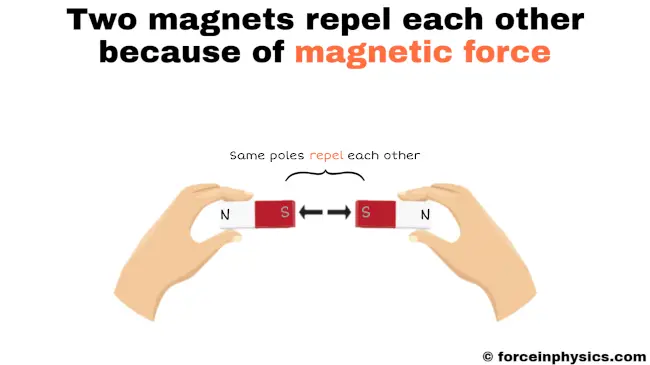
The repulsion of two magnets occurs when like poles (two north poles or two south poles) face each other. According to the principles of magnetism, like poles repel each other. The magnetic force generated between the similar poles pushes them away from each other.
Nut
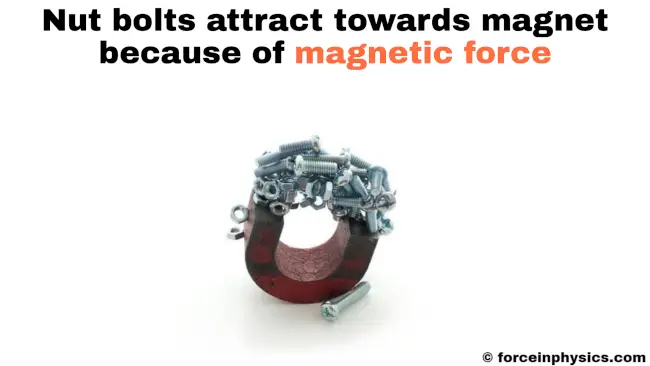
When nut bolts, made of ferromagnetic material, come into the vicinity of a magnet, they are attracted to it due to magnetic force. As the magnet induces a magnetic field in the metal, it creates an attraction that draws the nut and bolts towards it.
Paper clip
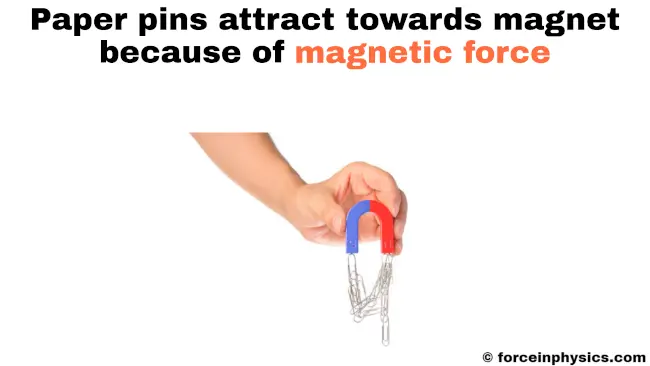
When a paper clip, typically made of steel, is brought near a magnet, it becomes attracted to the magnet. The magnetic force affects the magnetic domains in the steel, aligning them in a way that causes the paper clip to stick to the magnet.
Coin
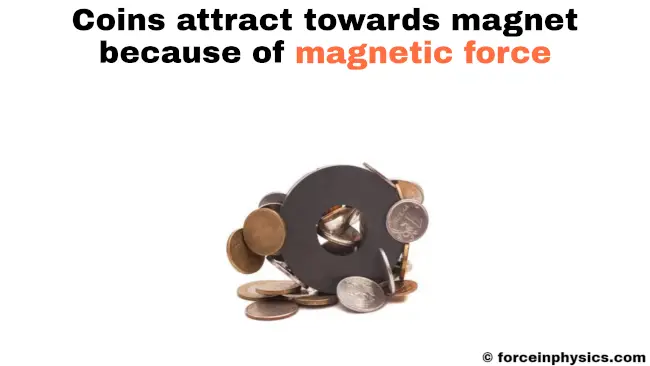
Although coins are typically made of non-magnetic materials like copper or aluminum, they may appear attracted to a magnet due to an electromagnetic effect. This occurs because some coins contain trace amounts of magnetic material or can become temporarily magnetized when exposed to a strong magnetic field. As a result, these coins are drawn towards the magnet, demonstrating the influence of magnetism even on materials not traditionally considered magnetic.
Wrench
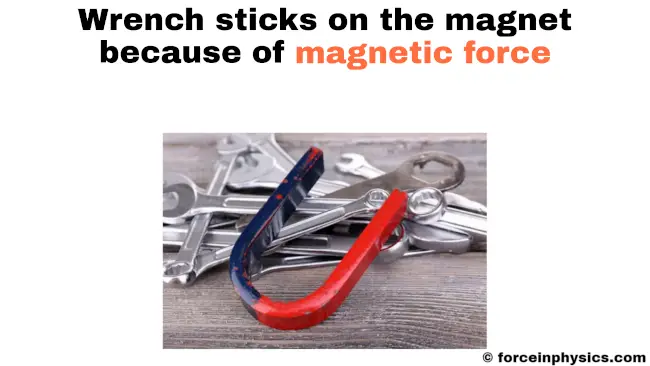
If a wrench, made of ferromagnetic material (such as steel), sticks to a magnet, it’s because the magnetic force is acting on the metal. The magnetic field induces magnetism in the steel, and this induced magnetism causes the wrench to be attracted to the magnet.
Key
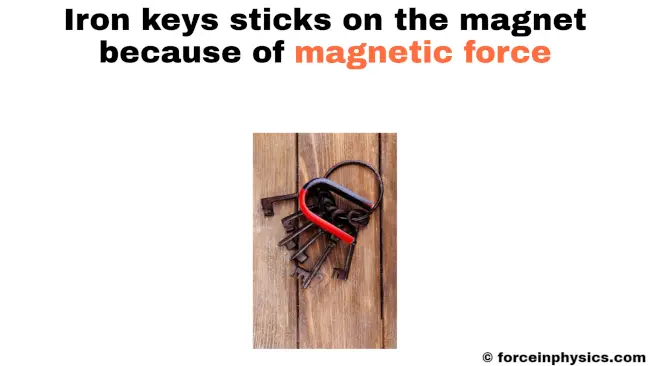
Similar to the wrench, if iron keys stick to a magnet, it indicates the presence of ferromagnetic material in the keys. The magnetic force creates a temporary magnetic field in the iron (induced magnetism), which attracts the keys and causes them to stick.
Iron powder
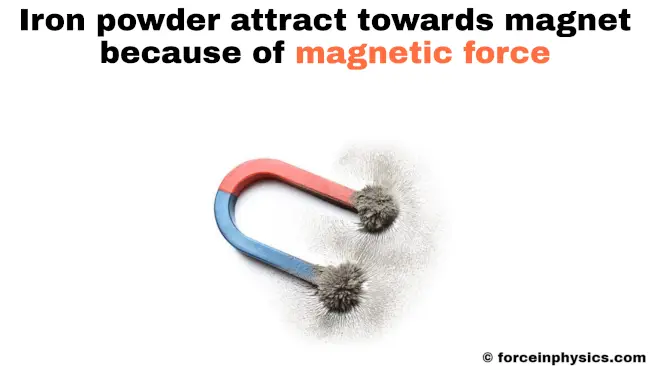
When iron powder is brought near a magnet, it is attracted due to the magnetic force acting on the individual iron particles. The magnetic field aligns the iron particles, and this alignment causes them to be drawn toward the magnet. This phenomenon demonstrates the ability of magnets to attract and manipulate small magnetic particles.
Related
- Balanced force
- Unbalanced force
- Friction
- Tension (physics)
- Applied force
- Normal force
- Drag (physics)
- Gravity
- Centripetal force
- Centrifugal force
- Buoyancy
- Net force
- Compression (physics)
More topics
External links
- Magnetic force | Definition, Formula, Examples, & Facts – Britannica
- What is magnetic force? (article) – Khan Academy
- Magnetic forces – HyperPhysics Concepts
- Force between magnets – Wikipedia
- Magnetism – National Geographic Society
- Magnetic Force on a Current-Carrying Conductor – Physics LibreTexts
- Magnetic Forces – K&J Magnetics
- Magnetic Force and Field | Formula, Equation & Relationship – Study.com
- Magnetic Fields, Field Lines, and Force – OpenStax
- The magnetic force on a moving charge – University of Tennessee, Knoxville
- Magnetic Force – Energy Wave Theory
- Magnetic Force on a Current-Carrying Conductor – BCcampus Pressbooks
- AP Physics 2 : Magnetic Force – Varsity Tutors
- Magnetic Fields – Isaac Physics
- Magnetic Forces on Charged Particles – University of Louisville
- Magnetic Field Strength: Force on a Moving Charge in a Magnetic Field – Texas Gateway
- Magnetic Force on a Current-Carrying Conductor | Physics – Lumen Learning
- the magnetic force and field – University of Rochester
- Magnetic Force – Seattle University
- Magnetic Force – ScienceDirect
- What is magnetism? Facts about magnetic fields and magnetic force – Live Science
- Why does magnetic force only act on moving charges? – Physics Stack Exchange
- Magnetic Forces and Fields: Meaning & Examples – Vaia
- Magnetic Force: Definition, Equation, and Examples – Science Facts
- Magnetic forces and fields – IOP Spark
- Magnetic force Definition & Meaning – Merriam-Webster
- Magnetic Force: Definition, Equation & Units (w/ Examples) – Sciencing
Deep
Forceinphysics.com was founded by Deep Rana, who is a mechanical engineer by profession and a blogger by passion. He has a good conceptual knowledge on different educational topics and he provides the same on this website. He loves to learn something new everyday and believes that the best utilization of free time is developing a new skill.
